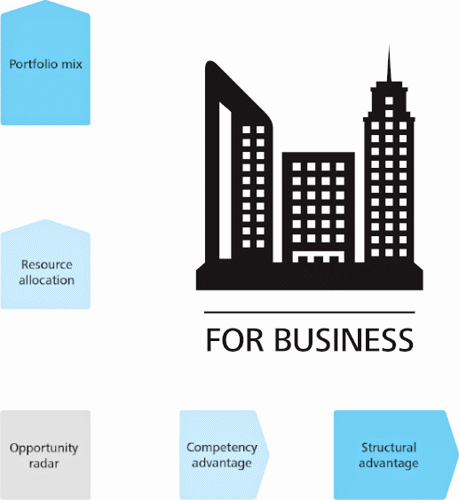
Building the Lucky Country
Dorian Lapthorne | 3 December 2013
Positioning for prosperity
Seeds of growth
Deloitte has just released the latest in its highly regarded “Building the Lucky Country” series. Following the two prior pieces, Where is your next worker? (November 2011) and Digital Disruption – Short fuse, big bang! (November 2012), this paper, Building the Lucky Country #3: Positioning for Prosperity, asks the question - with a cooling resources boom, a new government, rebounding business confidence and a falling Australian dollar - what’s next for Australia?
We would love to say that the findings suggest the next big thing driving Australia forward will be automotive retailing, however, the seeds of growth for Australia’s next two decades are more likely to be found in our unique advantages in agribusiness, gas, tourism, international education and wealth management.
Together these five waves could be every bit as big as mining – in fact they have the potential to add a quarter of a trillion dollars to national income over the next two decades.

In this Motor Industry Alert we will explore how you might go about getting your business ready to take advantage of these coming opportunities, and in the next MIA we will look specifically at how Australia’s car makers and dealers might benefit from the prosperity they may bring.
Catching the next wave
Positioning your own business for long term prosperity in this environment is not about luck. It relies on seeking out and catching the next wave of opportunity. No matter which sector you’re in, there are opportunities to grow.
The key to catching that wave lies in understanding where your business is positioned today and identifying the best ways to move towards areas of higher growth and developing a greater, lasting advantage for your business.
Just because an overall industry sector enjoys a certain proximity to a growth opportunity does not mean that all businesses within that sector have the same chance at prosperity. Nor does it mean that businesses outside the sector will automatically miss out. Each business will occupy different niches and many will operate across more than one sector. Automotive retailers, for example, have the opportunity to find contracts supplying the high potential sectors of gas and agribusiness or find individual customers who are benefiting from the Wealth Management boom. There is even the possibility of recruiting talented individuals who have come to Australia from overseas to study.

Creating opportunities for growth
For any particular organisation, the goal will be to either find ways to get closer to the high growth sectors of the future or to enhance their own unique advantages – their “unique selling proposition” – in serving those markets.
There are five primary levers that companies can use to achieve this. These start with identifying the organisations current status then reviewing its capabilities in terms of competencies and structural advantages. Then organisations need to focus on how they allocate resources and change their portfolios to increase their exposure to growth opportunities.
Understanding your position: Your opportunity radar
Companies need to sense where growth opportunities and risks may lie in their operations, their immediate marketplace and even related markets they may never have considered – for example, will the emergence of the gas sector mean another raid on the technicians you have been training in your service department? Will the potential in the wealth management sector attract top management talent away from your organisation?
This is no trivial exercise, but it is a vital one. After all, if you can’t spot the opportunities (or worse don’t even try to), then it is hard to chart a course for success for your business.
Companies should also monitor changes in consumer trends and be conscious of how those are affecting their market positions. At the same time businesses should scan the horizon for any strategic or operating risks that could push them further away from the engines of growth in the economy.
The tools for creating this awareness and visibility are many: everything from company suggestion boxes to management strategy meetings. Companies can even tap social media to better understand consumer sentiment and trends, using crowdsourcing to ask questions of large and perhaps even unknown groups and communities, vastly expanding their access to information and insights.
In this age of ‘big data’, the challenge is not getting information, but making sense of it. This is likely to require a deliberate, structured approach in your business and plenty of conversations and debates before you reach clarity about where your business is really positioned today. And where the opportunities lie for you in the future.
Enhancing your competitive advantage: Structural advantage
Companies are always searching for an edge. Yet those edges are hard-won, and often all-too-temporary. To build sustainable sources of competitive advantage that can be hardwired into their business, companies will need to do more than just improve their people and processes. They will need to create or acquire assets that deliver them structural advantages.
These assets could be intangible, such as relationships and networks that competitors find hard to emulate – in the automotive world, for example, we should be asking how we can build ties with organisations in agribusiness or gas to become their preferred suppliers. Or they could be physical assets, such as properties and facilities. Smart businesses do not always need to acquire these assets – often it is enough to strike exclusive arrangements to gain preferential access to them.
Enhancing your competitive advantage: Competency advantage
Companies can build on their structural advantages by expanding their competencies. A rapid way to achieve this is to develop a pool of superior talent by enhancing recruiting, motivation and day-to-day management practices aimed at finding, retaining and developing the best people.
The predicted rise in International education provides another potential opportunity for Australian businesses to build competencies. Clever businesses will forge links with educational institutions that are attracting foreign students in order to identify and attract the top performers – doing so means their pool of potential recruits expands dramatically to become the best of the world, rather than just the best of their local capital city.
However, to ensure this advantage is sustained, these practices must be embedded and institutionalised within the organisation. They must also be complemented by continual improvements in business processes to maximise any productivity growth arising from the improving pool of talent being developed.
Looking outside, companies can partner with third parties to create unique capabilities. This might include forming alliances with technical specialists to gain access to a level of expertise it would be difficult for the business to develop on their own.
Increasing exposure to growth: Portfolio mix
The more aggressive way for a company to increase its exposure to growth opportunities is to actively change the mix of businesses it owns, or the areas of business in which it chooses to operate. Groups may need to make hard decisions and exit areas where growth is limited, or where they lack sources of competitive advantage.
This is common sense, but there are many examples of businesses staying far too long in weakening segments where they lack a competitive value proposition. By the time they decide to move, they lack the financial firepower to do so on their own.
Increasing exposure to growth: Resource allocation
Moving closer to the future sources of prosperity in Australia means aligning a company’s operations to the areas of potential growth throughout the economy. The organic – and typically lowest risk – way to achieve this is to reallocate resources and people. For example, the company should look at deploying its top talent into business areas with significant growth potential.
While this sounds obvious, organisations often miss growth opportunities because they simply don’t invest enough in undertaking transformation programs for their business or they are simply unwilling to move their best performers away from ‘proven’ business areas to newer, ‘riskier’ parts of the business that promise future growth.
Or to put it another way, no guts, no glory.
Getting the full picture
This has been an edited excerpt of Building the lucky country #3: Positioning for Prosperity. For more information on catching the next wave of prosperity in Australia please visit the Deloitte Australia website, or for your copy of the full version of the paper, please register here.
Alternatively, do not hesitate to contact one of the Deloitte Motor Industry Services partners.
General Information Only
This presentation contains general information only, and none of Deloitte Touche Tohmatsu Limited, its member firms, or their related entities (collectively the “Deloitte Network”) is, by means of this presentation , rendering professional advice or services.
Before making any decision or taking any action that may affect your finances or your business, you should consult a qualified professional adviser. No entity in the Deloitte Network shall be responsible for any loss whatsoever sustained by any person who relies on this presentation.
About Deloitte
Deloitte refers to one or more of Deloitte Touche Tohmatsu Limited (“DTTL”), its global network of member firms, and their related entities (collectively, the “Deloitte organization”). DTTL (also referred to as “Deloitte Global”) and each of its member firms and related entities are legally separate and independent entities, which cannot obligate or bind each other in respect of third parties. DTTL and each DTTL member firm and related entity is liable only for its own acts and omissions, and not those of each other. DTTL does not provide services to clients. Please see www.deloitte.com/about to learn more.
Deloitte Asia Pacific Limited is a company limited by guarantee and a member firm of DTTL. Members of Deloitte Asia Pacific Limited and their related entities, each of which are separate and independent legal entities, provide services from more than 100 cities across the region, including Auckland, Bangkok, Beijing, Hanoi, Hong Kong, Jakarta, Kuala Lumpur, Manila, Melbourne, Osaka, Seoul, Shanghai, Singapore, Sydney, Taipei and Tokyo.
This communication contains general information only, and none of Deloitte Touche Tohmatsu Limited (“DTTL”), its global network of member firms or their related entities (collectively, the “Deloitte organization”) is, by means of this communication, rendering professional advice or services. Before making any decision or taking any action that may affect your finances or your business, you should consult a qualified professional adviser.
No representations, warranties or undertakings (express or implied) are given as to the accuracy or completeness of the information in this communication, and none of DTTL, its member firms, related entities, employees or agents shall be liable or responsible for any loss or damage whatsoever arising directly or indirectly in connection with any person relying on this communication. DTTL and each of its member firms, and their related entities, are legally separate and independent entities.

